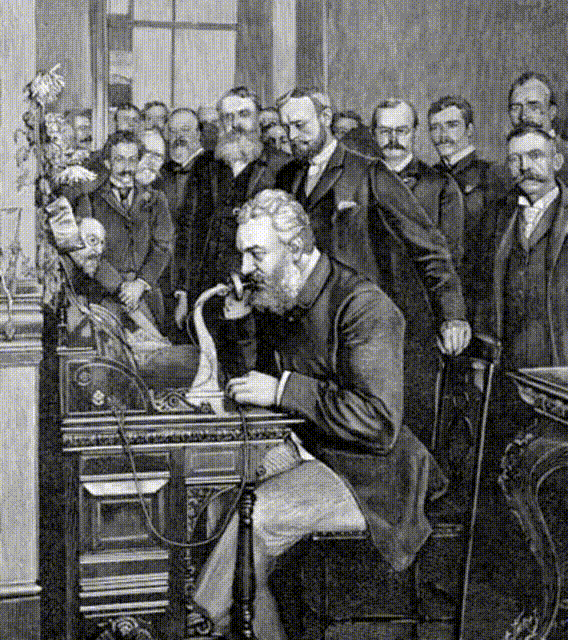
“
The inventor…looks upon the world and is not contented with things as they are. He wants to improve whatever he sees, he wants to benefit the world; he is haunted by the idea.
Alexander Graham Bell wasn’t like most 19th-century inventors driven by patents and profit. What motivated him was personal. He grew up in a family immersed in sound and communication. His father was a renowned elocutionist who created Visible Speech, a phonetic system to teach the deaf to speak. When Bell’s mother lost her hearing, he learned to communicate with her by pressing his mouth to her forehead so she could feel the vibrations of his voice. Later, he married Mabel Hubbard, who had been deaf since childhood. Bell went on to teach at schools for the deaf and ran experiments of his own, which is how he became captivated by the mechanics of sound and human connection. It was that curiosity that led to the invention of the telephone.
He was born in Scotland in 1847, but after the loss of both his brothers to tuberculosis and a bout of illness himself, Bell moved with his family to Canada in 1870 in search of a fresh start. They settled in Brantford, Ontario, where he finally had the quiet and space to think. At Melville House, working between the backyard and barn, he began developing a way to send voice through wire. In 1876, at age 29, he made the world’s first successful long-distance telephone call, to Paris, Ontario. That simple call marked the beginning of a communications revolution that would transform the world.
A big part of Bell’s strength as a leader was his ability to bring the right people together. He relied on collaboration and respected the craft and hands-on knowledge of those around him. His breakthroughs came through constant trial and error, a willingness to listen, and the belief that great ideas could come from anywhere.
After the telephone, Bell could have built a global empire. He held the first US patent and had momentum on both sides of the border. The Bell Telephone Company he co-founded in 1877 eventually grew into AT&T. In Canada, his father helped launch what would become Bell Canada. But Bell didn’t stay. He sold most of his shares early and walked away from business. He wasn’t interested in running a corporation.
Bell later moved to Baddeck, Nova Scotia, where he turned his home into a working lab. In 1907, he brought together a small team of young engineers and co-founded the Aerial Experiment Association. He backed them financially, gave them space to build, and acted as a mentor. Two years later, they launched the Silver Dart, the first powered airplane flight in Canadian history, right off the ice at Bras d’Or Lake. Bell continued exploring new ideas, designing hydrofoils and early wind turbines that contributed to advances in both aviation and renewable energy.
While focused on invention, Bell remained committed to public service throughout his life, helping to start schools for the deaf, supporting medical research and education. That’s what makes Alexander Graham Bell worth remembering. Not just for inventing the telephone, but for how he kept building across disciplines to make a difference.
As we think about how to grow Canada today, Bell’s legacy challenges us to rethink what it means to lead: to invest in ideas before they’re obvious, to back builders with visions, not just valuations, and to believe that world-changing work can and should happen here.
Sources
This story draws on research from Reluctant Genius: Alexander Graham Bell and the Passion for Invention by Charlotte Gray; Alexander Graham Bell: The Life and Times of the Man Who Invented the Telephone by Edwin S. Grosvenor and Morgan Wesson; Alexander Graham Bell and the Conquest of Solitude by Robert V. Bruce. Additional sources include the Encyclopedia Britannica, Wikipedia, Bell Homestead Museum, BCE Archives, Cape Breton University, Beinn Bhreagh Archives, and the Canadian Aviation and Space Museum.

